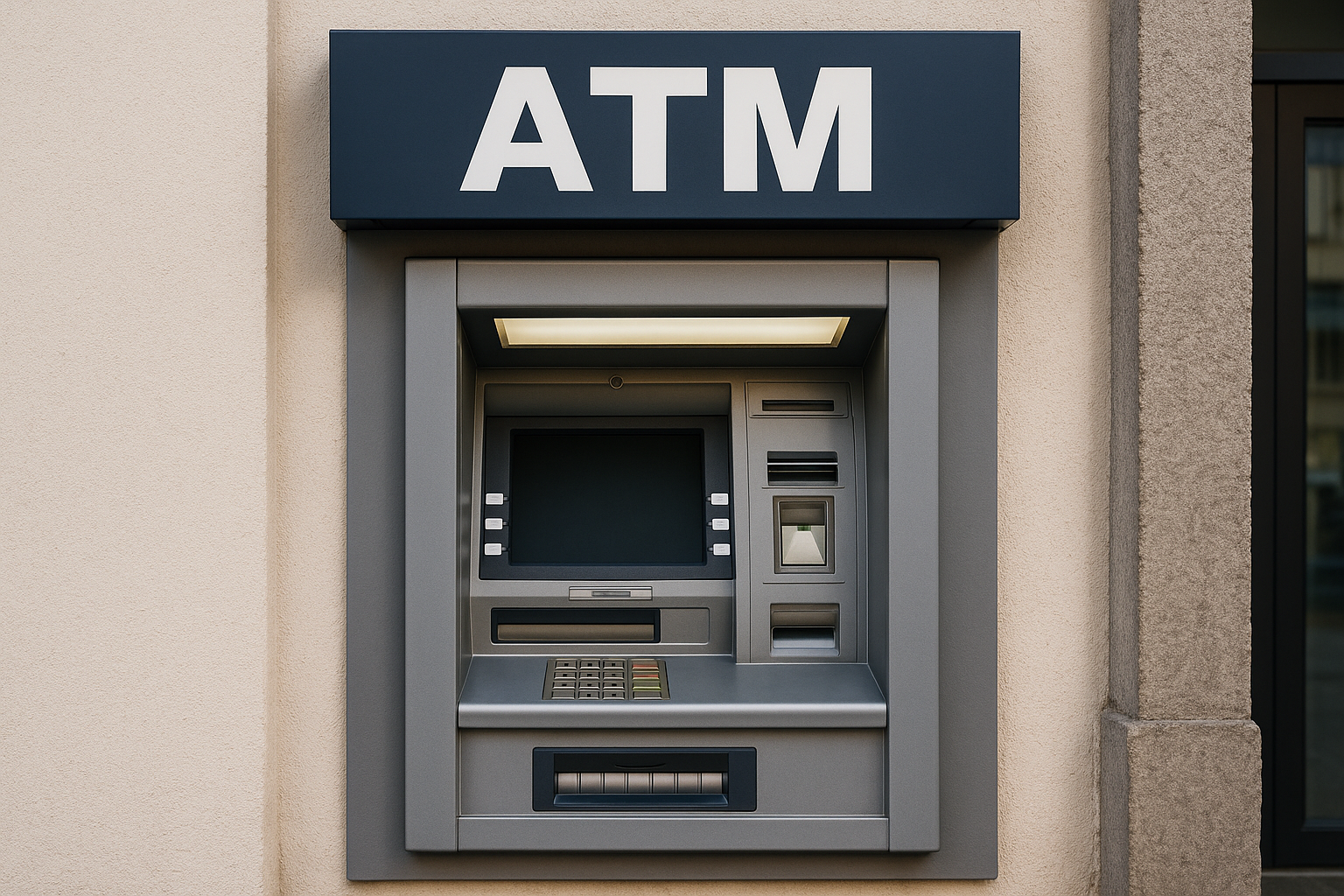ATMs feel simple on the surface, but behind every transaction is a complex system of hardware, encrypted data, banking networks, and fraud-prevention technology. Each time you insert your card, tap your phone, or request cash, the machine triggers a series of coordinated processes involving card authentication, PIN encryption, network routing, bank authorization, and secure cash dispensing.
This guide walks through every major ATM component and the full transaction flow—from card read to cash dispensing—so you understand how ATMs really work behind the scenes.
Knowing how ATMs function also helps you avoid errors, protect your money, and choose machines with lower fees or better security features.
How an ATM Works: Complete Overview
ATM Hardware Components
1. Card Reader (Magstripe, EMV Chip, NFC)
Modern ATMs support magstripe cards, EMV chips, and contactless mobile wallets. The reader captures your encrypted account data without storing it locally. Older machines that rely heavily on magstripes are more vulnerable to skimming. If you need ATMs that still accept magstripe cards, see: Magstripe ATM Near Me.
2. PIN Pad
The PIN pad is tamper-proof and encrypts every key press instantly. Even the ATM itself cannot see your PIN—only your bank can decrypt the request.
3. Cash Dispenser & Cassettes
The cash dispenser stores bills in secure cassettes, scans each bill with optical sensors, rejects damaged or suspicious notes, and presents a neatly stacked payout. For a deeper technical breakdown of dispenser mechanics, see: ATM Cash Dispenser Guide.
4. Cash Deposit Module
Deposit-enabled ATMs use multi-sensor imaging to verify bills and checks instantly. These machines accept envelope-free deposits and store high-resolution scans for bank review.
5. Internal Computer
ATMs run on secure, hardened operating systems (like Windows 10 IoT or Linux). The internal computer orchestrates hardware activity, encrypts data, and manages network communication.
6. Receipt Printer & Audit Logs
Receipts and internal audit logs document successful transactions, errors, and cash movements for reconciliation and fraud monitoring.
7. Sensors, Cameras, and Security Modules
Modern ATMs include anti-skimming sensors, tamper switches, cassette detectors, and surveillance cameras. These protect your session and help detect suspicious or unauthorized activity.
Step-By-Step ATM Transaction Flow
Step 1: Card Insert, Tap, or Mobile Wallet Scan
ATMs now support chip cards, magstripe cards, and mobile wallets like Apple Pay, Google Pay, and Samsung Pay. Contactless ATMs protect your card from physical skimming attempts.
Step 2: PIN Entry and Encryption
Your PIN is encrypted using a secure cryptographic key before being sent to your bank. If entered incorrectly multiple times, the ATM may retain the card as a security precaution.
Step 3: Transaction Selection
Depending on the ATM type, available options may include withdrawals, deposits, transfers, mobile wallet access, and balance inquiries.
Step 4: Network Routing
The ATM sends your request across networks such as Plus, Cirrus, Pulse, MoneyPass, Allpoint, or Star. Network rules determine which cards the ATM accepts and whether additional fees apply.
Step 5: Bank Authorization
Your bank checks your balance, verifies your PIN, applies withdrawal limits, and evaluates fraud-prevention rules. If anything fails—wrong PIN, suspicious activity, or network outage—you’ll receive a decline message.
Step 6: Approval Sent Back to the ATM
The bank responds with an approval code, allowed withdrawal amount, and any fee disclosures required by your network or card issuer.
Step 7: Cash Dispensing
The ATM selects bills, validates them using sensors, stacks them, and presents them through the dispenser slot. If a jam occurs, the machine may cancel the transaction to avoid miscounts.
Step 8: Receipt and Logging
The ATM logs the transaction, prints an optional receipt, and updates internal audit records for security and maintenance.
How ATMs Stay Secure
ATM security combines hardware protections, encrypted network communications, card authentication, and anti-skimming technology. Machine-learning systems also monitor for unusual activity or high-risk withdrawals.
Why ATM Errors Happen
Common error causes include cash jams, misaligned cards, chip-reading failures, low funds, incorrect PIN entries, service outages, and network problems. These errors trigger specific codes for technicians or banks to review.
The Role of ATM Networks
ATM networks determine whether your card is accepted, whether fees apply, and whether contactless withdrawals are supported. Surcharge-free networks like MoneyPass and Allpoint can eliminate out-of-network fees entirely.
ATM Types and Their Differences
1. Bank Branch ATMs
These machines offer advanced features such as secure deposits, reliable cash availability, and strong security monitoring.
2. Retail Store ATMs
Found in convenience stores, gas stations, and supermarkets. These machines often charge higher fees but may be available 24/7.
3. Contactless / Mobile Wallet ATMs
These allow you to withdraw cash using your phone instead of inserting a physical card, reducing skimming risk and speeding up transactions.
Why Understanding ATM Functionality Helps You
Knowing how ATMs operate helps you avoid fees, prevent fraud, understand decline reasons, navigate deposit issues, use mobile wallets correctly, and choose safer machines—especially in high-traffic retail locations.
Final Thoughts
Behind every withdrawal is a sophisticated system of hardware, banking networks, encryption, and fraud detection. Understanding how ATMs work gives you greater confidence and helps you make smarter, safer choices when accessing your money.
